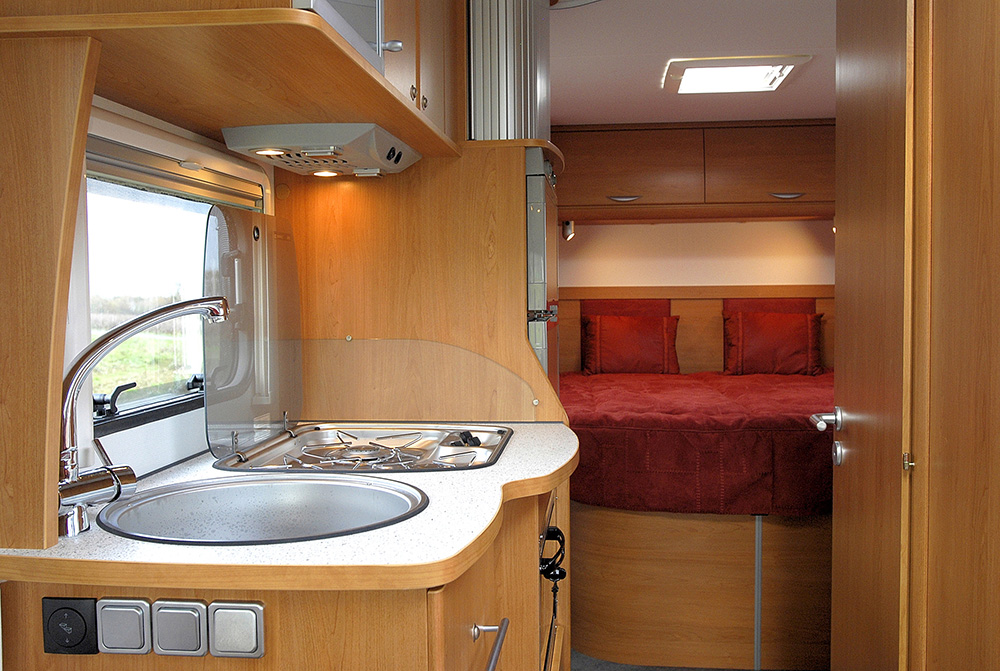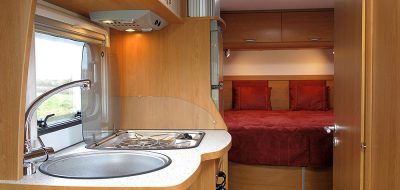RV freshwater tips for clean lines and clear H20.
Your RV internal fresh water supply is an important system in filling your camping needs. Unlike your home water, some component maintenance is a requirement periodically. Over time, bacteria can gather in your water tank, pump, lines and related valves. Cleaning these is a fairly easy project requiring more time than labor. Here are the simple RV freshwater steps. (Note: Water system will be unavailable for 12 hours).
- Drain the fresh water tank fully and close the drain valve
- Remove any in-line water filter elements and isolate ice maker feeds
- Using a 5 gallon pail, fill with 4 gallons of water and ½ once of bleach
- Fill the tank with as many of the 4-gallon mixtures as it takes. (Do not put any non-diluted bleach into the tank. Only 4 gallons water to ½-ounce bleach)
- Remove any tap screens. These are normally screwed on the opening of the tap spout. Place these to soak in a bowl of the water/bleach solution
- Turn on the water pump. Turn each tap on in the RV and run until you can smell the bleach. Turn off. (Don’t forget shower valves, washer, etc.)
- Top the tank up with the 4 gallon to ½ once bleach and leave everything stand for at least12 hours.
- After allotted time drain tank and fill with fresh water. Flush taps with fresh water from tank until you no longer smell the bleach. Rinse the tap screens and re-install.
Doing this once or twice a year should keep your RV freshwater system free from odor and crystal clear.
Some RV freshwater fill methods may require the adding of the water/bleach solution to be done by filling the full house filter housing or using an in-line hose adapted mixer.
Check out this selection of products for your RV freshwater system and other RV needs.
Well, that’s it! It’s Miller time!
Peter Mercer – With the Clear Water Choice






Karen Ravencroft
I am having a time figuring out which way and what valves go to where. There are two grey lines with inline valves. These valves turn and turn no matter which way. I set as I thought was the open line. But no water to tub. Set other way water to tub But I have no water pressure. Finally got water back to kitchen but again no water pressure. I had water pressure in kitchen prior to draining the anti freeze. Lost that while seaching for the drain to tank. Could there be another valve I have not located, bad valves, or? How do these grey plastic valves suppose to work. The lines are a plastic line. It is a 95 Jayco Eagle pull RV.
Peter Mercer
Great point on using an add-on liquid injector. This is definitely the best method. As far as the tap outlet screens, they should be removed and cleaned. Foreign matter will not necessarily be washed out with the bleached water. They should be thoroughly cleaned. Thanks for sharing your knowledge on this topic.
Anonymous
Pouring in a bucket at a time is untenable, esp. for those with large tanks, like my 100 gallon one. Making the job too involved means some discouraged newbies won’t do it properly or will not do it at all. A quarter cup per 15 g. is rule of thumb.
After nearly 33 years of motorhoming, I fill the tank half way with the hose, then add the bleach and top up. I don’t clean the faucet screens separately – they get doused well enough when I run the solution through the faucets, and some through again hours later when it’s being flushed out.
Now for people with diesels that may have no open fill port and just a switched female hose connect in the water bay, some suggest pouring the bleach in the hose before putting water pressure to it, but the first time I tried that it was messy (not great when handling bleach) and the inside of the hose sluffed chemical the taste of which was hard to eliminate the rest of that summer. Now I use a black garden hose soluble fertilizer injector that with practice and quick-connects easily adds a cup and a half of bleach during the fill.
Peter Mercer
The hot water tank, or hydronic water circuit, can also be cleaned in the same manner. However, a beach solution will not remove any calcium should it be present. I hope that answers your question. Thanks for your input.
Anonymous
The Hot water tank was not addressed at all. and with the groups I am on. That seams to be the biggest issue I see being asked.
Peter Mercer
You are quite correct. Thank you for bring this up.
Anonymous
ALSO, you cannot use the new “concentrated” and “splash proof” chlorine products. You can call the 1-800 number on the jug and they will help you find the products that can still be used for this. Or better yet, find something you think will work, THEN call them and they will ask for the bar code number and confirm it that way. I just had this conversation with them yesterday on this very subject
Peter Mercer
Well, it’s difficult to answer your question as there are several RV water systems being used out there. So I will try to generically answer it. To sanitize the tank and lines you will need to add about 1/2 ounce of bleach per 4 gallons. If your unit only has a hose fitting input you will need a method. A full flow house filter with the element removed is one. You could also time the water flow from your hose as to time verses 4 gallons. Then pour an ounce into the hose that you will be screwing onto the fill fitting. Now, run the water at the set flow rate for the time required to supply two 4 gallon measures.
It sounds much more complicated than it really is. If you need some other thoughts please let us know the particulars of your RV water system. There is no reason to by-pass the hot water tank. Santizing it too can prevent water odors later.
Hope this is of aid to you and thanks for your query.
Anonymous
New at this RVing stuff, how do you fill your tanks, and do you close your water heater?
Peter Mercer
Hmmm, the Vodka winterizing approach! I’ll bet you have no problem finding friend to help de-winterize your boat. Remember, boat winterizing and driving don’t mix!
Thanks for the great posting!
Anonymous
On the boat, I used to winterize by emptying tanks, then pouring in a bottle of vodka which protected against freezing while disinfecting tanks and waterlines. In the spring you didn’t need to worry about flushing the tanks. Just fill them up. Best tasting water was after the first fill!
Peter Mercer
There are several schools of thought on this. My suggestion would be to sanitize the tank, lines and components and then drain the system completely. I hope this is of help to you and thank you for taking the time to comment.
Peter Mercer
No, I stated a 1/2 ounce per 4 gallons, or 2 ounces (1/4 cup) per 16 gallons. Yes, non-scented is what you should use. Thank you for your input on this topic.
Anonymous
Hoe about advice on summer-izing your RV? Some of us put our RVs in storage for the hot summer season in AZ.
Thank you.
Anonymous
Hope you did not mean 1/2 ounce of bleach. I think the proper ratio is more like 1/4 cup per 15 gallons of tank cap. Also you, must use PLAIN bleach, not scented.